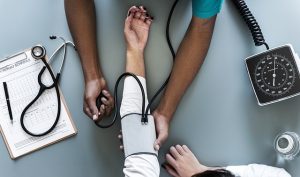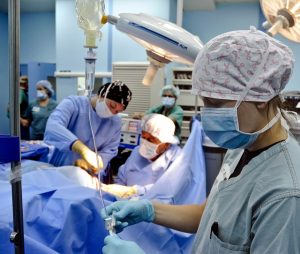What are Clinical Rotations?
In the U.S., the first two years of medical school are typically classroom lectures and book-inspired learning with very little hands-on experience. But applying these skills to real life medical situations is difficult without actual experience. That is why the third and fourth years of medical school include clinical rotations.
Clinical rotations are time spent shadowing physicians and residents in order to see what it’s like to truly experience practicing medicine. Students get to participate in the medical decision-making process, and they gain the invaluable experience about uncertainty and solution-making inherent in medical practice. This may be the first time medical students have dealt first-hand with patients, so it is really an opportunity to understand the physician-patient relationship.
 Core Rotations:
Core Rotations:
Core rotations are not elective, but they may vary depending on the medical school. These rotations cover the breadth of general medicine. They may include family medicine, internal medicine, pediatrics, OB/GYN, psychiatry, emergency medicine, and surgery. The learning opportunities expand as the student progresses through the rotations, and they leave with a greater understanding of their future responsibilities and skill requirements.
Elective Rotations
Elective rotations are specified and more applicable to your future hopes and dreams in the medical field. These rotations may cover subjects such as ophthalmology or plastic surgery. Elective rotations typically occur during the fourth year of medical school. Because of this, it is easy to get distracted and focused on residency rather than rotations. This can make it difficult to select rotations, and the help of an adviser or mentor is suggested to keep you on the right path.
 Clinical Rotations are a Job
Clinical Rotations are a Job
One thing about clinical rotations is that it can be very much like a job, and it should be treated like a job. Even though there is no pay, and you may work long hours, this is very similar to what you will do as a resident and then a practicing physician. The hours and the work environment will be similar, and rotations are a first opportunity to experience “the real world” of a physician.
It would be a mistake to underestimate the importance of rotations, and a medical student should take it seriously. This means dedication, attentiveness, eagerness, and self-care to make sure you are getting everything you can from every moment observing others in the medical field. It is also a chance for networking, and some of the professional connections you make during this time will be life/career-long.
Clinical Rotations and Foreign Medical Graduates
As a foreign medical graduate, U.S.-based experience is a must. It may be helpful to get assistance from an outside source such as FMG Portal to help you get started. Any U.S. experience obtained prior to the Match will help a student get into to more residency programs, as it will look better on applications and during interviews.
Advantages of Clinical Rotations for Foreign Medical Graduates
- Hands-on Experience: For all medical graduates, foreign or not, clinical rotations add valuable hands-on experience that cannot be replaced by classroom lectures. Students will learn from actual doctors and in the professional setting.
- Letters of Recommendation: When applying for residencies through the Match, foreign medical graduates will need letters of recommendation from colleagues within the United States. This sends a message to residency directors that your educational background includes cultural acclimatization and that you have experience practicing medicine in the U.S. Healthcare System.
- Performance Evaluations: Most clinical rotations offer performance evaluations where you will be informed of you strengths and weaknesses in certain areas of medicine. This is very valuable for future studying and in order to know where to get more experience.
- Pathway to Residency: As a foreign medical graduate, you need local training to be considered for many residency programs, and clinical rotations provide a pathway for that to occur before graduation, so you don’t have to spend time after graduation getting experience before the Match.
The outlook for foreign medical graduates is constantly getting better despite political issues causing problems with visas, etc. There is a physician shortage that must be filled, and the American people and residency directors are consistently looking at foreign medical graduates as hope for a system that is lacking.
One of the ways that you can help foreign medical graduates (yourself) along is by making sure you have the background to show that you will be a formidable physician in the U.S. Clinical rotations are one way to do that. Not only do they give you added knowledge, experience and skills to help you practice better medicine, but they also make you look good to residency directors who may be concerned about your medical school experience. This shows them that not only is your educational background strong, but you have already had success applying it to patients in the U.S.